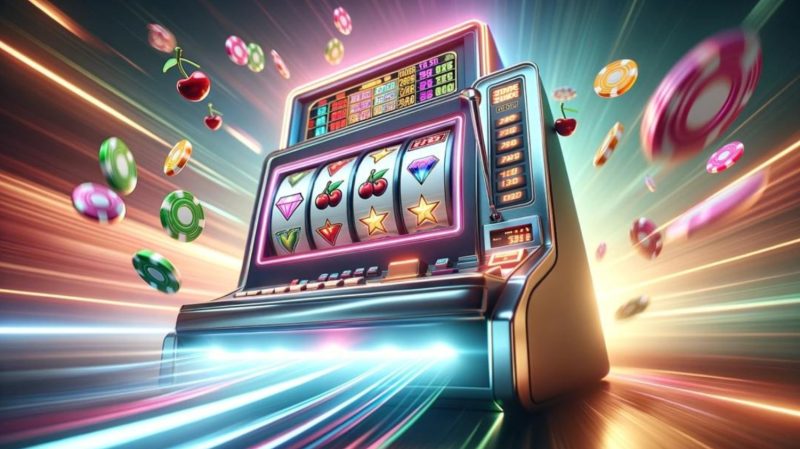
Slots aren’t just flashing screens with cherries and sevens. They’re highly engineered, psychologically calibrated systems built with precision. There’s no soul behind the reels, but there is character. And behind that character is not only math, but also design, sound, pacing — everything that keeps players engaged and makes games profitable. Let’s take a deeper look at what goes into art slot design, how slots actually work, and what it takes to attract and retain players.
A Slot Machine Isn’t Roulette — It’s a Script Disguised as Chance
What’s the biggest myth? Slot machines rely only on chance. In reality, each spin follows a specific algorithm. It is not about the machine’s “mood”; it is all about the arithmetic and physics that go on behind the scenes. What is behind the curtain of every modern slot game?
- The RNG (Random Number Generator) is the heart and brain of every slot. This system operates continually in the background, even when no one is spinning the reels. Each spin creates a number that specifies the exact combination of symbols on the screen.
- Paytables are visual guides to winners. It displays the amount you can receive for each symbol match. Everything, from minor rewards to jackpots, is determined by the combination.
- RTP (Return to Player) is an important metric that shows how much of all wagers the machine returns to customers over time. For example, if the RTP is 96%, that implies that for every $100 wager, players will receive $96 back. The remaining 4% represents the casino’s profit.
- Volatility: This is responsible for the nature of the payouts. High volatility means rare but large wins. Slots with low volatility, on the contrary, more often bring small wins, maintaining the balance of the game.
If you want to feel the excitement, know that each spin is not a chance, but a pre-calculated result, controlled by the code. Luck smiles on those who understand how the game process is organized.
Even with the word “random” in play, slot behavior becomes predictable over numerous spins. That’s why slot development is about balance — a system that feels rewarding without bankrupting the operator.
Why Players Don’t Leave After Five Spins
The truth is, players don’t stay because of RTP. They stay because the game feels like it’s almost hitting. Because it sounds exciting. Because it looks alive. Because something in it says, “You’re close.”
That’s where the art slot comes in — the emotional layer. Good visuals are like stage design in theater. If the background is dull, the character pixelated, and the reels spin like it’s Windows 98 — no one sticks around.
These are the visual elements that matter most:
- Theme: From Ancient Egypt to retro-futurism. Any theme can work if it’s polished.
- Animation: Reel speed, win reactions, bonus flashes — the feedback loop players crave.
- Interface: Buttons, meters, panels. Usability + style = retention.
- Sound: The invisible hook. Sound builds tension, rewards wins, and amplifies emotion.
This is where professionals like Inkration come in. Their art slot team knows every symbol must tell a story, and every button should trigger a feeling.
Why One Slot Earns Millions and Another Fades in a Week
Two slots with identical RTPs can perform worlds apart. Why?
Because slot success isn’t just numbers. It’s a combination of:
- Game design: bonus structure, pacing, level progression
- Setting: the world players want to return to
- User flow: clarity, feedback, motivation
- Surprise: wild features, multipliers, mini-games
Imagine two 95% RTP slots. One is a basic poker skin. The other is a cosmic adventure with cartoon monsters, voice-acted bonuses, and an epic soundtrack. Which one gets the player? Exactly — the one that delivers emotion, not just a shot at the jackpot.
Slots Are a Business, Not a Side Project
If you’re thinking about investing in slot development, good news — it’s a growing market. Bad news — it’s brutal to mediocrity.
Here’s what your game needs to not just survive, but earn:
- Solid math engine (RTP, volatility, gameplay mechanics)
- Strong visual storytelling — art, UI, animation, sound.
- Easy integration with platforms and providers.
- Smooth onboarding — players should understand the mechanics in 3 seconds.
- Room to scale — extra levels, skins, tournaments, P2P play.
Sure, you can build it all in-house. But without a skilled team, experience, or time for iteration, it makes sense to bring in experts. Inkration is one of those rare teams where art turns your project into a product and your slot into a brand. They create visuals players don’t want to skip and animations they want to see again and again.
The Real Secret: A Slot Is a Game, but Not for Everyone
Let’s not forget: the job of a slot is to engage and monetize. But not through trickery — through engagement. If a player feels the thrill, enjoys the ride, and wants to come back, it’s working.
A well-designed slot isn’t just a dressed-up slot machine. It’s:
- A complex mathematical model.
- A visual story.
- An intuitive interface.
- A localized product for multiple markets.
- A game that doesn’t get old.
Building this kind of experience is like directing a blockbuster. And delivering it means having a team that knows how victory sounds — and how anticipation looks.
